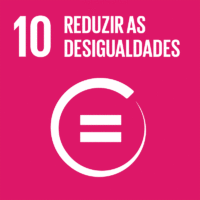Ciência_Iscte
Publicações
Descrição Detalhada da Publicação
Título Revista
Land
Ano (publicação definitiva)
2021
Língua
Inglês
País
Suíça
Mais Informação
Web of Science®
Scopus
Google Scholar
Abstract/Resumo
Hyperarid, arid, semiarid, and dry subhumid areas cover approximately 41% of the global land area. The human population in drylands, currently estimated at 2.7 billion, faces limited access to sufficient, affordable, and nutritious food. We discuss the interlinkages among water security, environmental security, energy security, economic security, health security, and food security governance, and how they affect food security in drylands. Reliable and adequate water supply, and the prevention of water contamination, increase the potential for ample food, fodder, and fiber production. Protecting woodlands and rangelands increases food security by buffering the slow onset effects of climate change, including biodiversity loss, desertification, salinization, and land degradation. The protection of natural lands is expected to decrease environmental contamination, and simultaneously, reduce the transfer of diseases from wildlife to humans. Biofuel production and hydroelectric power plants increase energy security but generate land-use conflicts, deforestation, and ecosystem degradation. Economic security generally positively correlates with food security. However, economic growth often degrades the environment, changes tenure rights over natural resources, and stimulates migration to urban areas, resulting in lower food and health security. Moreover, civil unrest, political instability, and armed conflicts disrupt local economies in drylands. Maintaining food security is crucial for health security; conversely, malnourished populations and unresponsive health systems decrease economic security, and adversely affect environmental, energy, and food security. Climate change is expected to deteriorate health security by spreading vector-borne diseases. Effective governance and timely interventions can substantially shorten periods of food insecurity, lower their intensities, and accelerate recovery from inevitable crises, and are therefore crucial in preventing humanitarian crises. Since global drylands population will nearly double by 2050, and since drylands are among the most susceptible areas to climate change, integrated multi-hazard approaches to food security are needed.
Agradecimentos/Acknowledgements
--
Palavras-chave
Climatic change,Land-use and management,Loss and damage,Natural vs. anthropogenic factors,Population growth and urbanization,Slow onset events
Classificação Fields of Science and Technology
- Ciências da Terra e do Ambiente - Ciências Naturais
Registos de financiamentos
| Referência de financiamento | Entidade Financiadora |
|---|---|
| EU COST Action 16233 | Comissão Europeia |
| UIDB/03122/2020 | Fundação para a Ciência e a Tecnologia |
Contribuições para os Objetivos do Desenvolvimento Sustentável das Nações Unidas
Com o objetivo de aumentar a investigação direcionada para o cumprimento dos Objetivos do Desenvolvimento Sustentável para 2030 das Nações Unidas, é disponibilizada no Ciência_Iscte a possibilidade de associação, quando aplicável, dos artigos científicos aos Objetivos do Desenvolvimento Sustentável. Estes são os Objetivos do Desenvolvimento Sustentável identificados pelo(s) autor(es) para esta publicação. Para uma informação detalhada dos Objetivos do Desenvolvimento Sustentável, clique aqui.

 English
English




